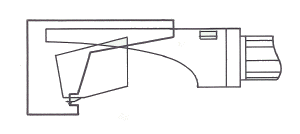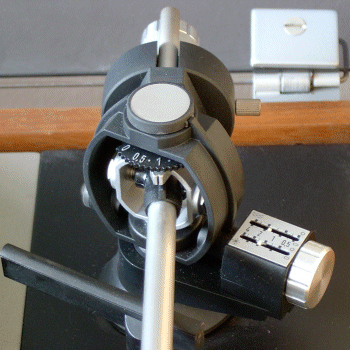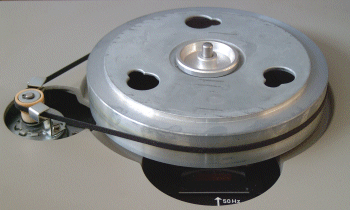 On the simple basis of the better the source material, the better the final result, the obvious first thing to do is ensure is that your records are in as good a condition as possible and that your analogue playback equipment is set up to yield the best possible audio quality.
On the simple basis of the better the source material, the better the final result, the obvious first thing to do is ensure is that your records are in as good a condition as possible and that your analogue playback equipment is set up to yield the best possible audio quality.
Turntable rumble is a very low frequency noise from the motor produced when a record is spun on the platter. Though imperceptible during normal usage, it has the potential to undermine the digitisation process. Direct drive turntables are less prone to rumble and it’s effect can be minimised by ensuring your turntable is positioned on a solid level surface free from vibration and, if necessary, lubricating the unit’s main bearing.
The pickup arm should be mounted in accordance with the manufacturer’s instructions and the phono cartridge adjusted both vertically and horizontally for minimum tracking error and the correct playing weight. A deviation of as little as 1mm in either plane can cause a significant tracking error and result in signal distortion.

This will normally be done using a pick-up gauge supplied by your tone arm manufacturer. Otherwise it’s possible to buy specialist cartridge alignment tools for the purpose.
Once you’ve aligned your cartridge correctly, you need to adjust its stylus force.

In this case, this is done using the stylus force adjustment knurled wheel.
Incorrect tracking force can damage your records as well as your stylus, and running the tracking force too low can be as bad as running it too high.
The interaction of the record groove friction force with the bearing force of the tonearm produces an additional component which tends to move the tonearm towards the centre of the record. This is referred to as skating force and is compensated for using an anti-skating adjustment.
With your cartridge properly adjusted you should now make sure that it’s stylus is clean. For best results, use a fine-tufted brush with a couple of drops of isopropyl alcohol on it. To avoid damaging the stylus, move the brush in the same direction as a record travels against it.
In a belt drive turntable a flat belt drives the inner driven-platter by friction. This needs to maintain constant velocity between the motor pulley and the driven inner platter, and any belt slippage or variation in rotational speed of the driven-platter caused by belt action will degrade sonic output.

As belts age and wear, they dry out, stretch and lose tension. If you have a big record collection to digitise it might be a good idea to replace your belt before you start.
The cleaner your actual vinyl records, the fewer clicks, pops and hisses you’ll have on your digital recordings. How you go about achieving this is down to budget and how much of a perfectionist you are.
At one extreme, you can invest in a specialist record cleaning machine. These so called wet cleaning systems generally work by generously applying a specially formulated cleaning fluid with a brush and subsequently vacuuming up the grit and dirt that this succeeds in loosening from the grooves of a record.
At the opposite extreme, you may achieve satisfactory results by holding a record under a gentle flow of water, cleaning out the grooves with a fine-haired brush or cotton ball circled in the same direction as the stylus travels during playing, and placing it on a soft, lent-free towel to allow it to dry.
In between there are all manner of different cleaning fluids, brushes, anti-static devices and sticky-tape roller systems.